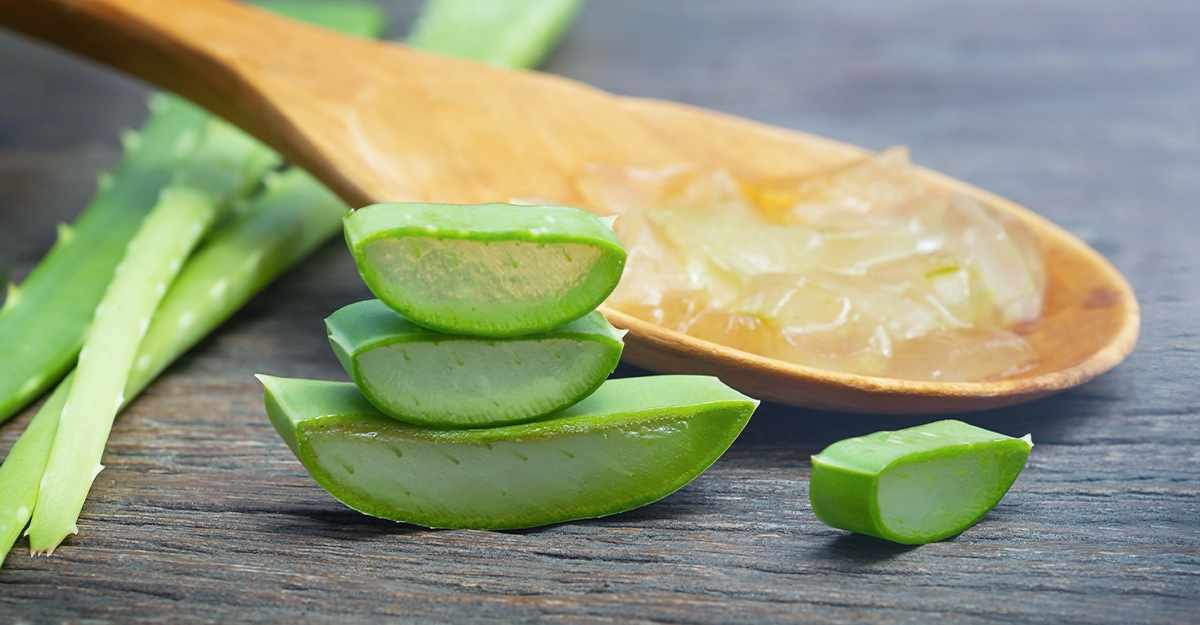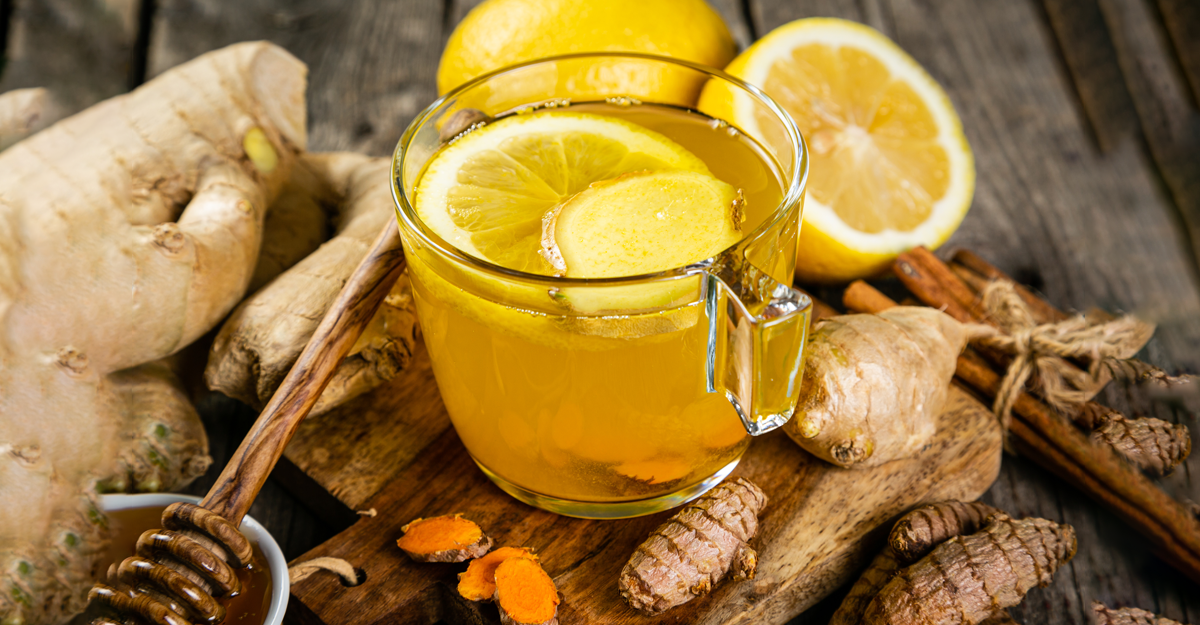
When people think of aloe, they typically think of aloe vera – the variety of aloe that has many healing properties. However, not all aloe succulent plants are equal. In fact, some are actually poisonous!
Aloe is a genus of about 500 species of flowering plants. The various types of aloe plants are distinguished from one another by leaf color, toothing, shape, plant height, and flowering style. It is critical to distinguish between varieties that are beneficial to humans and the ones that are not.
Different Types of Aloe Plants
Here are a few of the most popular varieties:
1. Aloe Vera
Aloe vera is a well-known member of the aloe genus. The vera part of the name comes from “la vera,” meaning, “the true one.” That is why aloe vera is often called the true aloe.
The flowers of aloe vera are yellow-orange, and the fleshy leaves grow from 12 to 16 inches in length. Its flower stalk can exceed 35 inches in height.
This popular type of aloe is beneficial to humans in multiple ways detailed later in this article.
2. Krantz Aloe
The krantz aloe (aloe arborescens) is also known as the candelabra aloe due to its candelabra-shaped branches. This aloe variety has a woody trunk and can grow over 6 feet tall. Its stems have toothed leaf rosettes at their ends.
Although the krantz aloe vera plant is typically grown for ornamental purposes only, it does have healing qualities when applied topically to relieve itching.
This type of aloe is toxic when ingested; it should not be consumed.
3. Lace Aloe
The lace aloe (aloe aristata) is a spherical dwarf aloe that produces an orange flower in late spring. It is stemless and forms six-inch leaves edged with white teeth.
This variety of aloe is poisonous and has no health benefits.
4. Spiral Aloe
The spiral aloe (aloe polyphylla) has short, egg-shaped leaves tapering to a point. These purple-tipped leaves are arranged in five rows spiraling in the same direction.
Spiral aloe sap is poisonous and should not be used topically or internally.
5. Cape Aloe
Cape aloe (aloe ferox) is a tree aloe with matte-green (or sometimes reddish) leaves and bright red or orange flowers. The wrinkled edges of the leaves are lined with brown teeth.
This aloe has been used for thousands of years as an ingested supplement to promote the health of epithelial tissue, including the bowel lining. Research shows that cape aloe positively affects regularity due to its influence on colon peristalsis, resulting in accelerated intestinal passage and relief from constipation.
When applied topically, cape aloe also has healing qualities that are beneficial to the skin.
6. Tiger Aloe
Tiger aloe (aloe variegata) forms lance-shaped leaves that curl as they age. When the leaves are stretched out, they display white, horizontal stripes. When tiger aloes are young, they produce red flowers at the end of the fifteen inch stems.
Tiger aloe is poisonous and has no health benefits.
7. Rubble Aloe
Rubble Aloe (aloe mitriformis) forms a rosette of eight inch leaves with toothed edges that are red at the tip. Often this variety produces small, scarlet flowers.
Juice from rubble aloe can relieve some skin problems.
8. Fan Aloe
The fan aloe (aloe plicatilis) can grow over sixteen feet tall. The leaves spread like a fan and are slender, typically toothless. The flower stem grows up to almost 20 inches in length and produces bright red flowers.
The sap of the fan aloe is poisonous.
9. Red Hot Poker Aloe
The red hot poker aloe (aloe aculeata) features a lemon-yellow flower and leaves that form a large rosette. The thick leaves grow to over 23 inches in length and often feature spines on their surface and red teeth on their edges. As the Latin name aculeata suggests, this plant is prickly.
Other types of aloe include aloe broomii, aloe humilis, climbing aloe, sunset aloe, mountain aloe, red aloe, and many other varieties.
The Benefits of Aloe Vera
Of all the above-mentioned aloe varieties, aloe vera is the most popular for medicinal use. It is best known for topically treating skin irritations or injuries, but it also has other applications.
Aloe vera has eight potential health benefits:
1. It contains healthful plant compounds.
The gel in the leaves contains beneficial bioactive compounds, including vitamins, minerals, amino acids, and antioxidants.
2. It has antibacterial properties.
Polyphenols in the plant’s gel help inhibit bacterial growth that could potentially cause infections in humans. Aloe vera is known for its antibacterial, antiviral, and antiseptic properties. These properties are why aloe vera helps heal wounds and treat skin problems.
3. It accelerates wound healing.
Aloe vera has a long history of use in treating redness, skin infections, itching, sores, sunburn, second degree burns, and even first degree burns. Compare aloe vera with conventional medications, and aloe vera outperforms by reducing healing time for burns by nine days.
4. It reduces dental plaque.
Studies show that rinsing the mouth with aloe vera reduces plaque buildup and bacterial biofilms on the teeth, thus helping to prevent tooth decay and gum disease.
5. It helps treat canker sores.
Aloe vera accelerates the healing of mouth ulcers or canker sores and reduces the pain associated with them. However, it does not outperform the conventional use of corticosteroids.
6. It may improve skin and prevent wrinkles.
Preliminary evidence suggests that the topical use of aloe vera gel can benefit skin in the following ways:
• Slow skin aging
• Improve skin integrity
• Help skin retain moisture
• Possibly relieve acne, psoriasis, and eczema
One 2009 study of 30 females over the age of 45 concluded that taking oral aloe vera gel improved collagen production and skin elasticity.
7. It lowers blood sugar levels.
Some people use aloe vera as a remedy for diabetes. A few studies suggest that it may enhance insulin sensitivity and blood sugar management. However, health professionals do not currently recommend aloe vera for this purpose.
8. It reduces constipation.
Aloe vera latex—the sticky yellow substance under the plant’s leaf skin—helps relieve constipation. The compound in the latex responsible for this laxative effect is aloin (or barbaloin).
Aloe latex is not available in the U.S. as an over-the-counter medication due to potential safety issues related to frequent use.
Aloe Supplements
The following aloe supplements deliver many of the potential medicinal properties and health benefits mentioned above.
Cape Aloe 250
Cape Aloe 250 by Natural Healthy Concepts</a> is formulated to support gastrointestinal function and bowel regularity. When ingested, anthraquinone glycosides are activated in the gut. The same compounds promote water retention in the stool and stimulate peristalsis in the large intestine.
For occasional use only. Do not use this product if you develop diarrhea or abdominal pain. Consult your health professional if you have frequent diarrhea. Do not use if pregnant. Nursing mothers should contact their health professionals before use.
Aloe/200x
Aloe/200x by Designs for Health—a natural, gluten-free supplement made from concentrated aloe extract—is formulated for digestive and gastrointestinal support.
This concentrated product helps to neutralize stomach acidity, relieve constipation, detoxify the intestines, and prevent yeast infections in the intestines.
If pregnant or nursing, please consult your healthcare professional before using this product.
Aloe Vera Leaf Juice
Aloe Vera Leaf Juice by Pharm Aloe is a 99.7% organic, gluten free, high-polysaccharide aloe juice for digestive, immune, detoxification and joint support. This formulation aids digestion by balancing stomach acidity, increasing assimilation of nutrients, and soothing digestive systems. It is also a good supplement for supporting high energy levels and normal joint function.
Ingestion of aloe vera may cause diarrhea or stomach cramps due to its laxative qualities. Contrary to popular belief, aloe vera is not effective against irritable bowel syndrome or inflammatory bowel disease. There have been a few reports of the long term use of aloe vera causing liver damage. Non Decolorized whole leaf extract of aloe vera may also be associated with cancer risk in rats.
The Bottom Line
There are hundreds of low-maintenance aloe species, but only a handful of them have proven health benefits. Aloe vera, cape aloe, and several others have been noted in this article. Acquiring these aloe products from reputable companies like Natural Health Concepts, Designs for Health, and Pharm Aloe ensures safety and maximum benefits.
* These statements have not been evaluated by the Food and Drug Administration. The products mentioned are not intended to diagnose, treat, cure, or prevent any disease.





